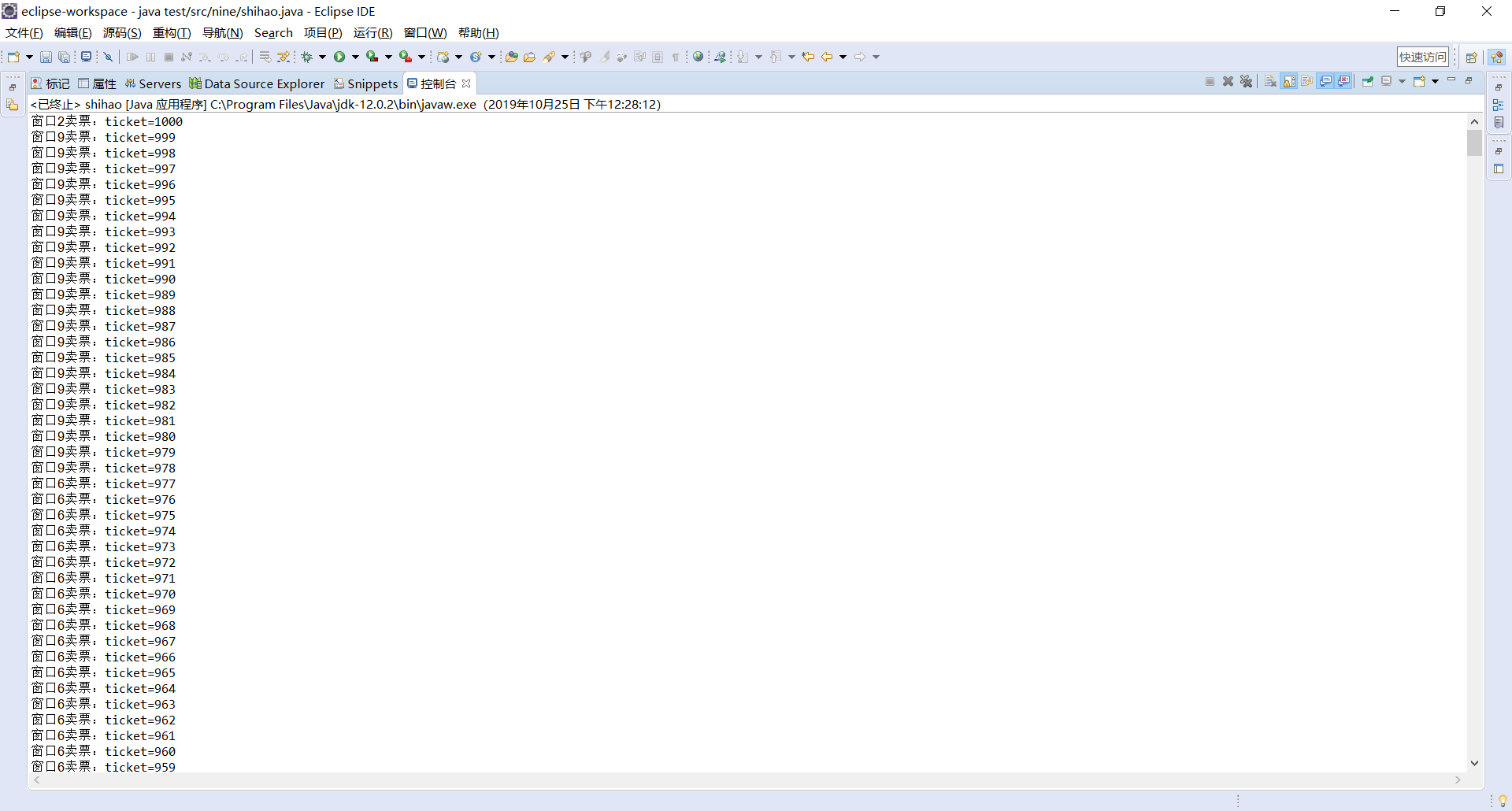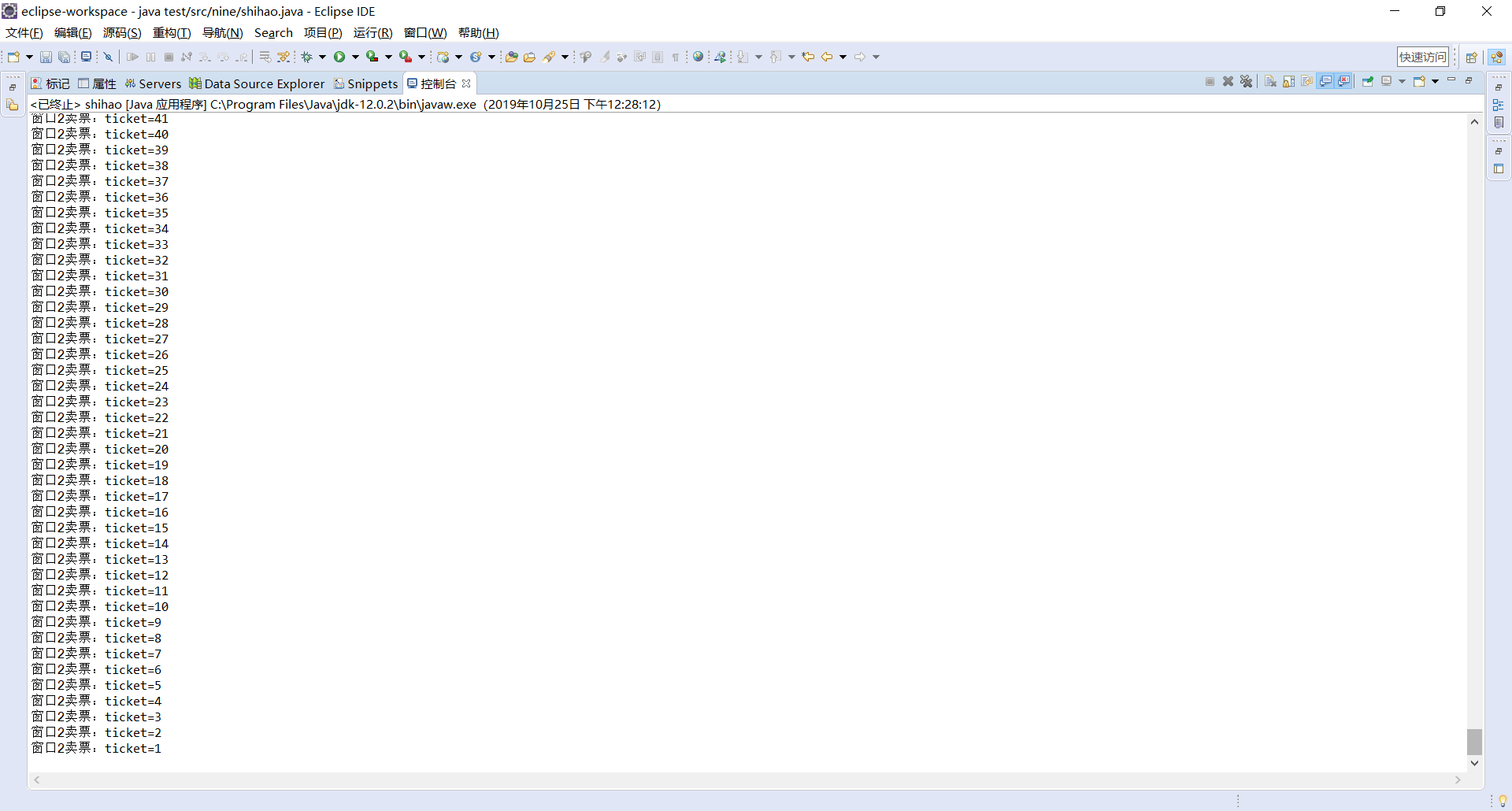Java io
IO流用来处理设备之间的数据传输,Java程序中,对于数据的输入/输出操作 都是以“流”的方式进行的。java.io包下提供了各种“流”类的接口,用以获取不同种类的数据,并通过标准的方法输入或输出数据。
流的分类
1.按照流的方向(输出输入都是站在程序所在内存的角度划分的)
1.输入流:只能从中读数据
2.输出流:只能向文件中写数据。
2.按照流的操作单元
1.字节流
2.字符流
3.节点流
4.处理流
� 提交作业
实验任务详情:
完成火车站售票程序的模拟。
要求:
(1)总票数1000张;
(2)10个窗口同时开始卖票;
(3)卖票过程延时1秒钟;
(4)不能出现一票多卖或卖出负数号票的情况。
package nine;
class Run implements Runnable {
private int ticket=1000;
public void run() {
for(int i=0;i<10000;i++) {
this.sale();
}
}
public synchronized void sale() {
if(ticket>0) {
try {
Thread.sleep(1000);
}catch(InterruptedException e) {
e.printStackTrace();
}
System.out.println(Thread.currentThread().getName()+"卖票:ticket="+ticket--);
}
}
}
public class shihao {
public static void main(String args[]) {
Run run=new Run();
Thread t1 = new Thread(run,"窗口1");
Thread t2 = new Thread(run,"窗口2");
Thread t3 = new Thread(run,"窗口3");
Thread t4 = new Thread(run,"窗口4");
Thread t5 = new Thread(run,"窗口5");
Thread t6 = new Thread(run,"窗口6");
Thread t7 = new Thread(run,"窗口7");
Thread t8 = new Thread(run,"窗口8");
Thread t9 = new Thread(run,"窗口9");
Thread t10 = new Thread(run,"窗口10");
t1.start();
t2.start();
t3.start();
t4.start();
t5.start();
t6.start();
t7.start();
t8.start();
t9.start();
t10.start();
}
}


